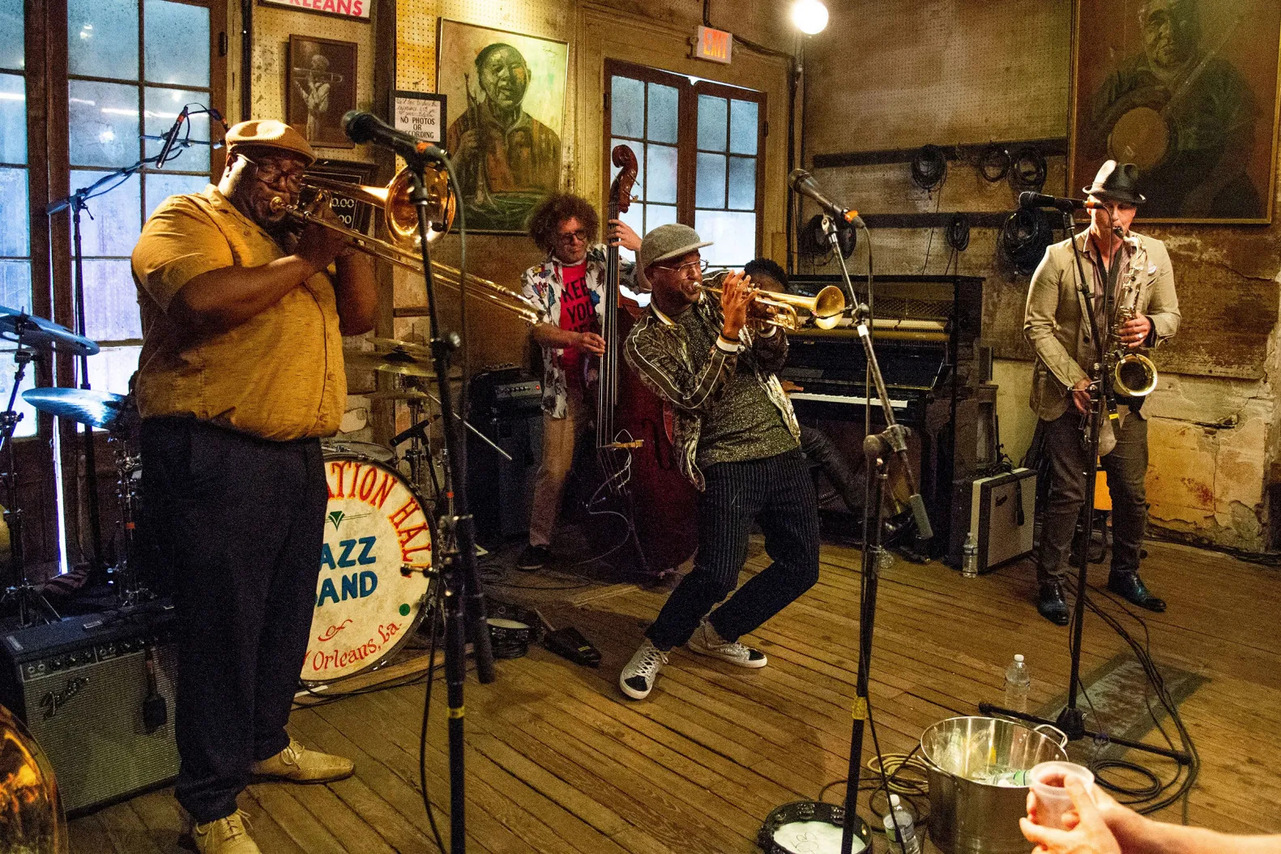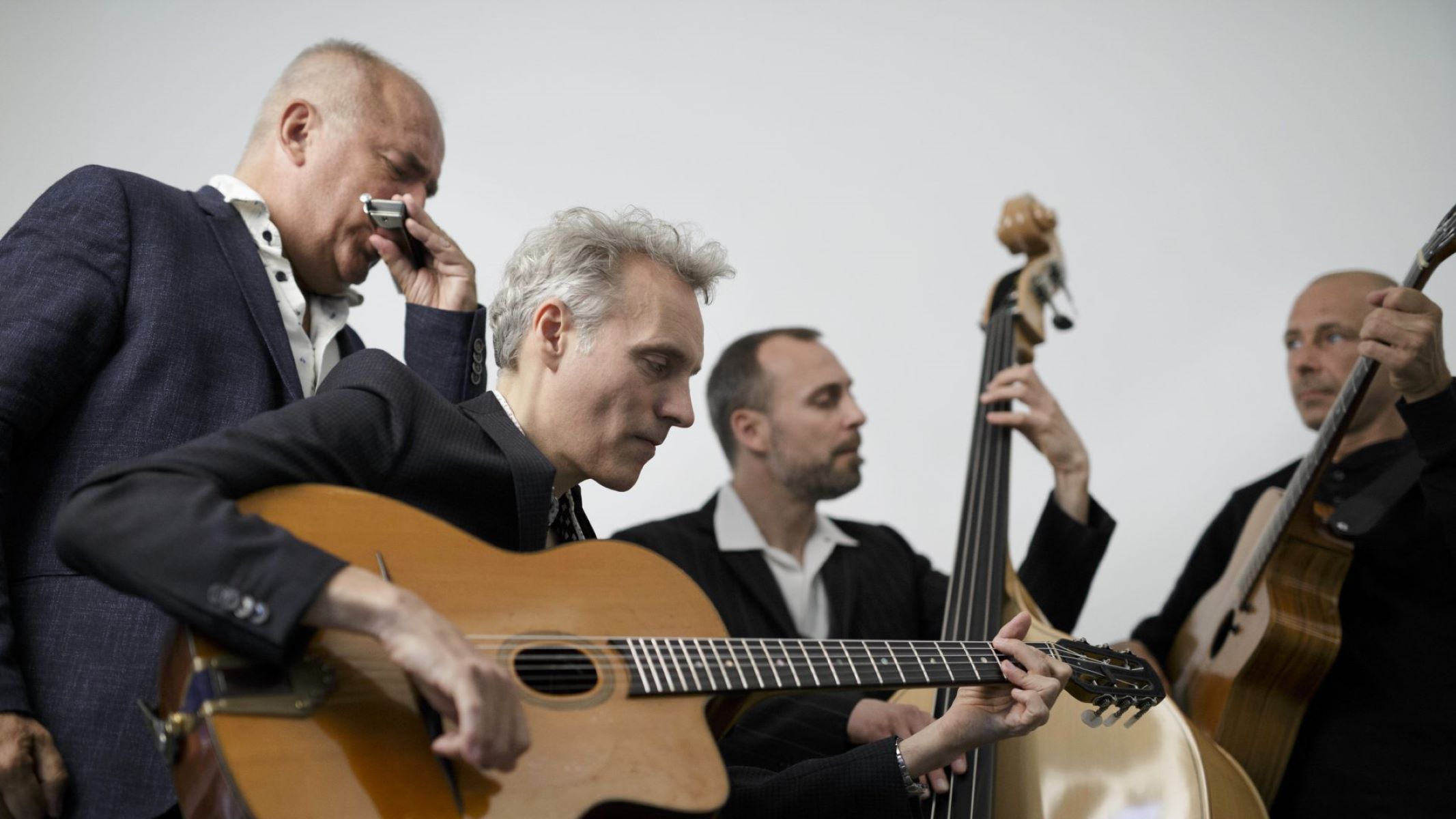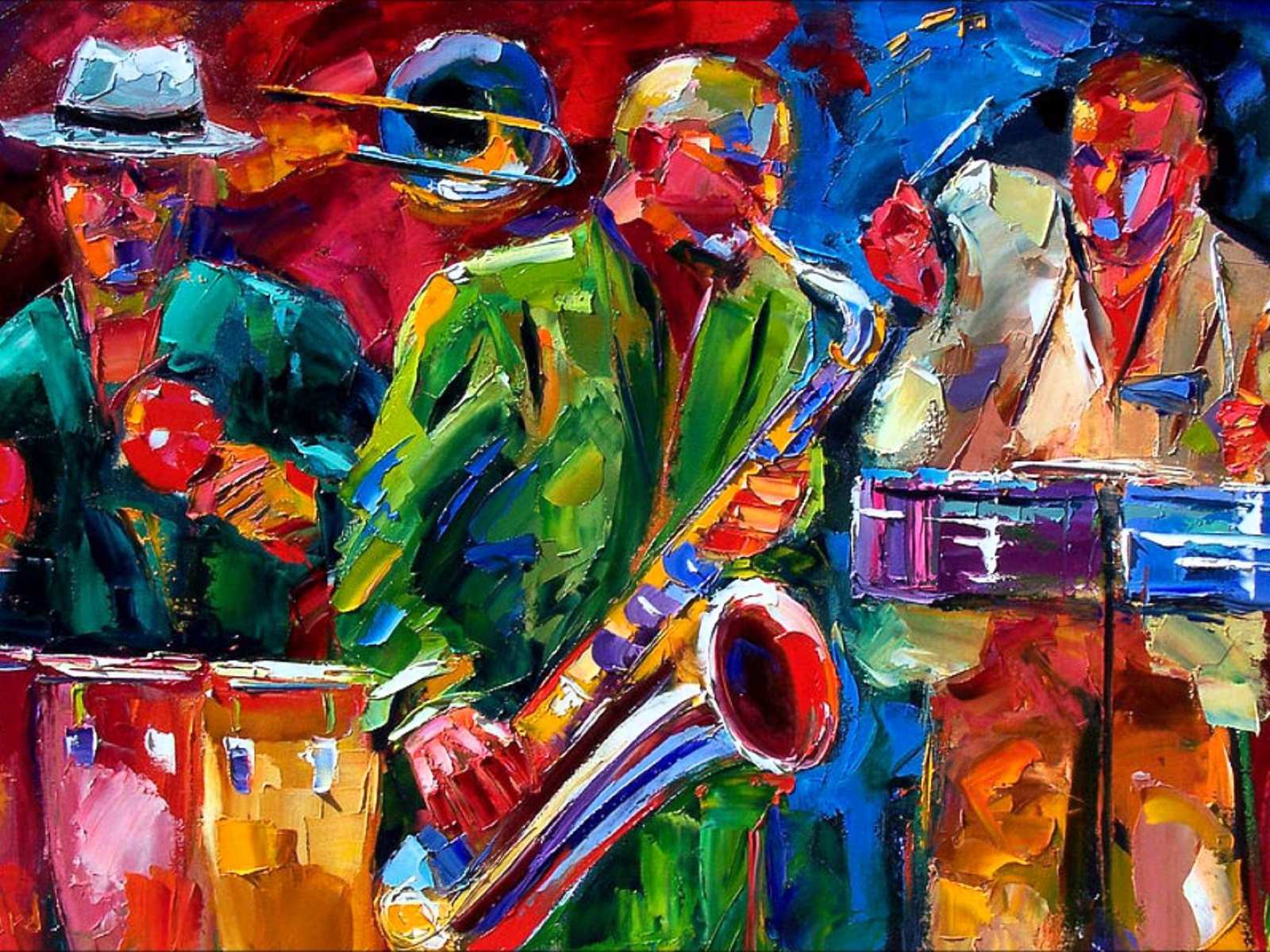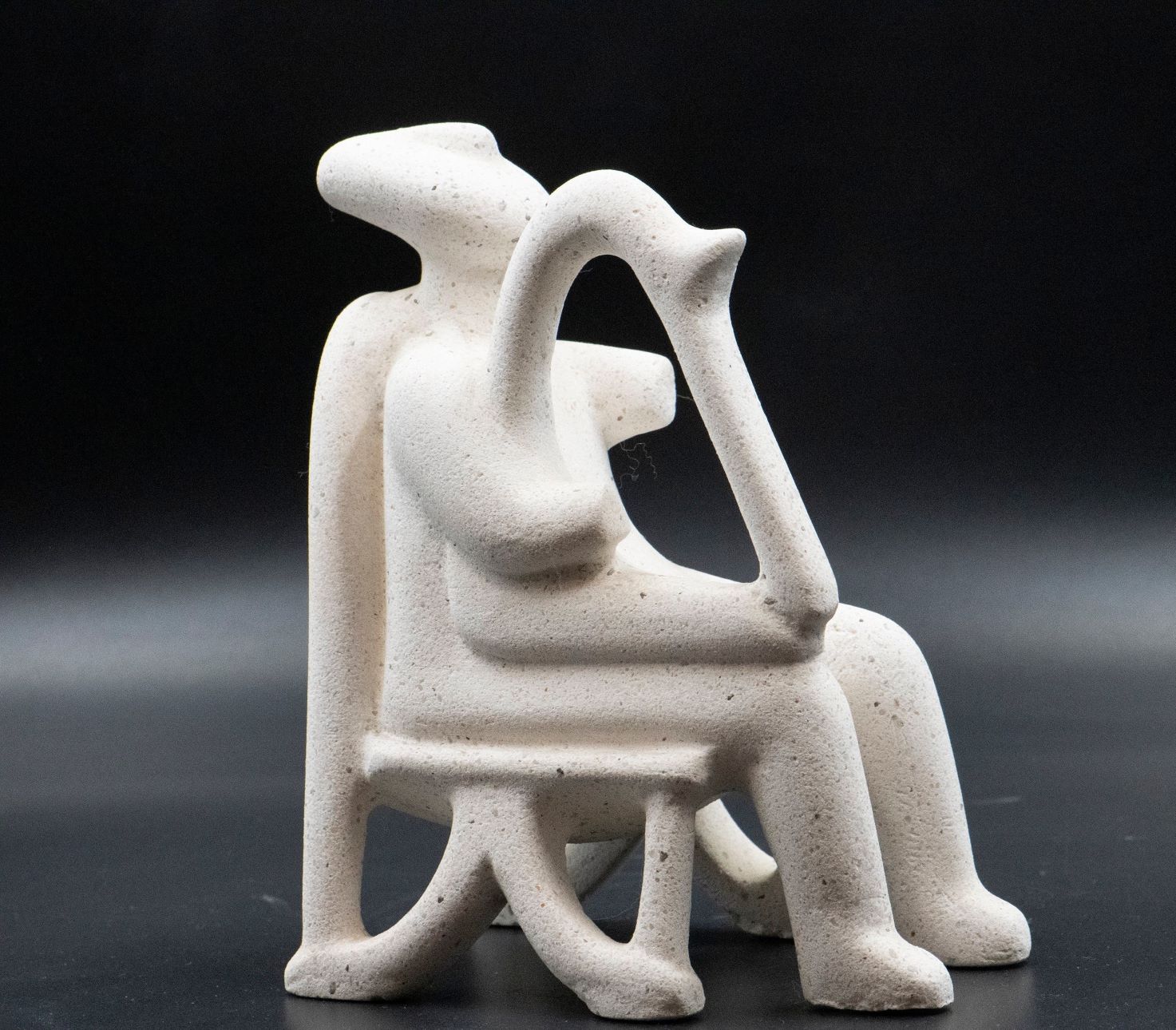Home>Genres>Jazz>What City In The United States Is Given Credit For Being The Birthplace Of Jazz Music


Jazz
What City In The United States Is Given Credit For Being The Birthplace Of Jazz Music
Modified: January 22, 2024
Discover the birthplace of jazz music in the United States, where the rhythmic beats and soulful melodies of this iconic genre first took root.
(Many of the links in this article redirect to a specific reviewed product. Your purchase of these products through affiliate links helps to generate commission for AudioLover.com, at no extra cost. Learn more)
Table of Contents
- Introduction
- New Orleans and its Role in Jazz Music
- The Importance of Congo Square
- The Influence of African and European Music Traditions
- Birth of Jazz: Combining African Rhythms with European Instruments
- Key Figures in the Birth of Jazz in New Orleans
- Evolution of Jazz and its Spread Across the United States
- Conclusion
Introduction
Jazz music is often hailed as one of America’s greatest contributions to the world of art and culture. Known for its improvisation, syncopation, and soulful melodies, jazz has captivated audiences for decades. But where did this iconic music genre originate? While there are various theories and debates, one city in the United States is widely credited as the birthplace of jazz – New Orleans.
New Orleans, with its vibrant cultural melting pot and rich musical traditions, played a pivotal role in the development and evolution of jazz. The city’s unique blend of African, European, and Caribbean influences created a fertile ground for the emergence of this groundbreaking musical style. From the rhythms of Congo Square to the brass bands marching through the streets, the spirit of jazz permeated the very essence of New Orleans.
In this article, we will delve into the fascinating history of jazz and explore the factors that led to its birth in the city of New Orleans. We will also highlight key figures who shaped the early days of jazz and discuss how it eventually spread across the United States and beyond. So, join us on this musical journey as we unravel the story of jazz and its enduring legacy.
New Orleans and its Role in Jazz Music
New Orleans, also known as the “Cradle of Jazz,” holds a special place in the history of this beloved music genre. The city’s unique cultural identity, rooted in a fusion of African, European, and Caribbean influences, created the perfect breeding ground for the birth and development of jazz.
One of the key factors that contributed to New Orleans’ prominent role in jazz music was the existence of Congo Square. This open gathering space, located in the heart of the city, served as a meeting point for African slaves and free people of color who would gather on Sundays to celebrate their cultural heritage through music and dance.
It was in Congo Square where African rhythmic traditions, such as the polyrhythms and syncopated beats, merged with European musical concepts brought over by colonizers. The result was a unique musical amalgamation that laid the foundation for what would soon become jazz.
Besides Congo Square, New Orleans was also known for its vibrant music scene, overflowing with brass bands, street parades, and dance halls. Musicians of various backgrounds and skill levels would come together to jam and experiment with different styles and improvisation. The free-flowing nature of these musical gatherings allowed for a cross-pollination of ideas and techniques, leading to the development of jazz’s signature improvisational style.
Furthermore, New Orleans was a hub for migration and cultural exchange during the early 20th century. Many African Americans, seeking better opportunities and escaping racial discrimination in the South, migrated to the city. This influx of talent brought in new perspectives and musical influences, further enriching the jazz scene in New Orleans.
Notable jazz pioneers such as Louis Armstrong, Jelly Roll Morton, and Sidney Bechet emerged from the vibrant music scene of New Orleans. These musicians, along with many others, honed their skills in the clubs and venues of the city, creating groundbreaking music that would shape the future of jazz.
Overall, the cultural diversity, musical traditions, and nurturing environment of New Orleans played a pivotal role in the birth and growth of jazz. The city’s unique blend of African and European influences, along with its vibrant music scene, created the perfect conditions for this iconic music genre to flourish and make a lasting impact on the world.
The Importance of Congo Square
Congo Square holds a significant place in the history of jazz and the cultural fabric of New Orleans. Located in what is now known as Louis Armstrong Park, Congo Square served as a gathering place for African slaves and free people of color in the 18th and 19th centuries.
During the era of slavery, Sundays became a day of rest for many enslaved Africans in New Orleans. It was on these Sundays that the people of African descent would gather at Congo Square to preserve and celebrate their ancestral cultural traditions through music, dance, and other forms of artistic expression.
Congo Square was a rare space where the restrictions imposed by slavery were temporarily lifted, allowing enslaved Africans to freely express themselves and preserve their cultural heritage. The rhythmic beats, chanting, dancing, and singing that took place in Congo Square formed the foundation of what would later become jazz.
It is important to note that the African musical traditions that were practiced in Congo Square greatly influenced the development of jazz. The polyrhythms, call-and-response patterns, and improvisation that characterized African music were fused with elements of European musical traditions brought over by colonizers. This fusion of African and European musical styles gave birth to the unique sound and improvisational nature of jazz.
Congo Square became a hotbed for musical experimentation and innovation. Musicians from different cultural backgrounds would come together to share their musical ideas, resulting in a rich musical exchange that further fueled the development of jazz.
Despite the challenges and injustices faced by the enslaved Africans in New Orleans, Congo Square provided a sanctuary where their cultural traditions could be celebrated and where the seeds of jazz could be sown. It was a place of resilience, resistance, and cultural preservation.
The legacy of Congo Square in the history of jazz cannot be overstated. Its influence on the development of the genre and its role as a symbol of African cultural resilience are deeply intertwined. Today, Congo Square stands as a testament to the enduring spirit of jazz and a reminder of the importance of honoring and preserving cultural heritage.
The Influence of African and European Music Traditions
The birth of jazz in New Orleans was deeply influenced by the rich musical traditions brought by both African and European cultures. The interplay between these two distinct musical styles played a fundamental role in shaping the unique sound and character of jazz.
African musical traditions, with their emphasis on syncopation, polyrhythms, call-and-response patterns, and improvisation, laid the foundation for the rhythmic and melodic complexities that would become synonymous with jazz. The African musical heritage brought by slaves to New Orleans contributed to the creation of jazz’s driving rhythm and dynamic energy.
On the other hand, European musical traditions, particularly those of French, Spanish, and Italian influences, introduced harmonies, formal structures, and instrumentation to the developing jazz genre. Brass instruments such as trumpets, trombones, and saxophones, which were commonly used in European military bands and orchestras, were adopted by jazz musicians and became iconic elements of the jazz sound.
The fusion of African and European music traditions was not a simple assimilation but a complex and vibrant exchange. African rhythms and tonalities were layered with European harmonies and instrumental techniques, resulting in a distinctly new musical language. This synthesis of traditions allowed for a level of freedom and creativity that set jazz apart from any other genre at the time.
One remarkable aspect of jazz is its emphasis on improvisation, which is directly influenced by African musical traditions. In African culture, music-making often involved spontaneity, with musicians responding to the energy and rhythms of the moment. This improvisational approach was embraced by jazz musicians, who used it to create innovative solos and engage in musical dialogues during group performances.
Furthermore, the concept of syncopation, which defines the offbeat accents and rhythms in jazz, can be traced back to African musical traditions. This rhythmic complexity, rooted in African polyrhythms, added a distinctive groove and swing to jazz music, setting it apart from more traditional European musical styles.
The melding of African and European music traditions in New Orleans created a transformative moment in musical history. It was a meeting of cultures that gave birth to one of the most celebrated and influential music genres in the world.
Birth of Jazz: Combining African Rhythms with European Instruments
The birth of jazz can be attributed to the unique combination of African rhythms and European instruments that took place in the vibrant city of New Orleans. This fusion of musical elements created a revolutionary sound that would captivate audiences and change the course of music history.
From the early 19th century, African slaves in New Orleans brought their rhythmic traditions and cultural practices with them. These rhythms, characterized by syncopation and polyrhythms, formed the backbone of African music and set the stage for the birth of jazz.
At the same time, European musical traditions, especially those of French, Spanish, and Italian influence, were prevalent in New Orleans due to colonization and the presence of European settlers. These traditions brought with them a wide range of musical instruments, including brass instruments like trumpets, trombones, and saxophones, as well as pianos, guitars, and drums.
The fusion of African rhythms and European instruments became the catalyst for the development of jazz. African rhythms provided the driving pulse and intricate rhythmic patterns, while the European instruments added melodic and harmonic elements to the musical landscape.
One notable aspect of this fusion was the prominent role of brass instruments in jazz. These instruments, which were commonly used in European orchestras and military bands, found a new home in the jazz scene of New Orleans. Their bold and vibrant sound became an integral part of the jazz sound, allowing for expressive solos, harmonies, and ensemble playing.
Jazz musicians found innovative ways to utilize these instruments, pushing the boundaries of traditional playing techniques and experimenting with new sounds. They adopted techniques such as “growling” and “mutes” to produce unique tonal qualities, creating a distinctive and recognizable jazz sound.
In addition to the instruments themselves, the way they were played in jazz was heavily influenced by African musical traditions. The concept of improvisation, which is central to jazz, can be traced back to the spontaneous and interactive nature of African music-making. Jazz musicians used their instruments as vehicles for personal expression and creativity, engaging in dynamic improvisation during performances.
Another crucial element of the birth of jazz was the blending of African vocal traditions with European vocal styles. African call-and-response patterns and vocal techniques merged with European harmonies and vocal articulations, resulting in a diverse and captivating vocal approach in jazz music.
The birth of jazz, with its fusion of African rhythms and European instruments, was a groundbreaking moment in music history. It broke down barriers, challenged conventions, and gave rise to a new form of artistic expression that continues to inspire and influence musicians around the world.
Key Figures in the Birth of Jazz in New Orleans
The birth of jazz in New Orleans was driven by the talents and contributions of several key figures who shaped the early days of this groundbreaking musical genre. These individuals played a pivotal role in laying the foundation for jazz and establishing its unique characteristics.
One iconic figure in the birth of jazz is Louis Armstrong, often referred to as the “Father of Jazz.” Armstrong, born in New Orleans in 1901, was a trumpeter, singer, and bandleader who revolutionized jazz with his virtuosic playing, improvisational skills, and charismatic stage presence. He was instrumental in popularizing the concept of jazz soloing and was a major influence on subsequent generations of jazz musicians.
Jelly Roll Morton, a pianist, composer, and arranger, was another influential figure in the birth of jazz. Morton claimed to have invented jazz, and while there is debate over this assertion, his contributions to the genre cannot be overlooked. His compositions and arrangements, such as “King Porter Stomp” and “Black Bottom Stomp,” showcased intricate rhythms and complex harmonies that became defining elements of jazz.
Sidney Bechet, a soprano saxophonist and clarinetist, was a prominent figure in the early days of jazz. Born in New Orleans, Bechet was renowned for his passionate playing style and expressive improvisation. He expanded the role of the saxophone in jazz and left an indelible mark on the genre with his recordings, including “Summertime” and “Petite Fleur.”
Another important figure in the birth of jazz was King Oliver, a cornetist and bandleader. Oliver’s band, the Creole Jazz Band, featured some of the finest jazz musicians of the time, including Louis Armstrong. Known for his powerful and expressive playing, Oliver played a vital role in popularizing jazz in New Orleans and beyond.
Storyville, the red-light district of New Orleans, also played a significant role in shaping the early days of jazz. This district, where prostitution was legal, provided a space for jazz musicians to perform and experiment with different musical styles. Notable musicians such as Buddy Bolden and Freddie Keppard honed their craft in Storyville and contributed to the development of jazz.
These key figures, along with many others, contributed their unique talents, innovative approaches, and boundless creativity to the birth of jazz in New Orleans. Their contributions continue to resonate in the music we recognize as jazz today, ensuring that their legacy lives on.
Evolution of Jazz and its Spread Across the United States
From its humble beginnings in the vibrant city of New Orleans, jazz quickly gained popularity and began to spread across the United States, ultimately becoming a defining musical genre of the 20th century. The evolution of jazz was influenced by various factors and culminated in its widespread recognition as a unique and innovative form of music.
As jazz began to gain traction in New Orleans, it attracted attention from musicians and audiences in other cities. Many jazz musicians, including Louis Armstrong and Jelly Roll Morton, left New Orleans and embarked on tours, taking the sounds of jazz to new audiences across the country.
One pivotal moment in the spread of jazz was the Great Migration, a movement of African Americans from the southern states to northern cities in search of better opportunities and an escape from racial discrimination. This migration brought jazz to cities like Chicago, New York, and Kansas City, where it continued to evolve and thrive.
In Chicago, jazz found a new home and flourished in the vibrant nightlife scene of the city’s South Side. Musicians such as King Oliver and Kid Ory made their mark on the Chicago jazz scene, while the arrival of Benny Goodman and other white musicians helped break down racial barriers, bringing jazz to wider audiences.
New York City also played a significant role in the evolution and dissemination of jazz. The Harlem Renaissance, a cultural movement in the 1920s, provided a platform for African American artists and musicians, showcasing the talents of jazz legends like Duke Ellington and Count Basie. Jazz clubs and venues in Harlem became hotspots for the latest jazz performances, attracting both local and international audiences.
Kansas City, with its vibrant music scene, became a major center for big band and swing jazz. Pioneering musicians such as Charlie Parker and Coleman Hawkins emerged from this city, pushing the boundaries of jazz with their innovative improvisation and technical prowess.
The spread of jazz was not limited to these cities alone. Jazz found its way into dance halls, speakeasies, and nightclubs throughout the country, exposing people from all walks of life to its infectious rhythms and expressive melodies. With the advent of radio and the recording industry, jazz recordings reached even larger audiences, popularizing the genre on a national scale.
Throughout the 20th century, jazz evolved and embraced different styles and subgenres, including swing, bebop, cool jazz, and fusion. It continued to captivate and inspire musicians across the country, leading to the establishment of jazz festivals, jazz education programs, and a dedicated community of jazz enthusiasts.
Today, jazz remains a vital part of American musical culture, appreciated for its rich history, improvisational nature, and ability to transcend genres. Its continued evolution and influence serve as a testament to the enduring legacy of jazz and its widespread impact across the United States and beyond.
Conclusion
The birthplace of jazz music, New Orleans, holds an undeniable significance in the history and development of this iconic genre. The fusion of African and European musical traditions, along with the cultural diversity and vibrant music scene of the city, created the perfect conditions for jazz to emerge and flourish.
From the rhythms of Congo Square to the influence of key figures like Louis Armstrong and Jelly Roll Morton, New Orleans provided a breeding ground for innovation and creativity in jazz. The improvisation, syncopation, and soulful melodies that define jazz can all be traced back to the cultural and musical cross-pollination that took place in the streets and clubs of the city.
As jazz spread across the United States, it found new life in cities such as Chicago, New York, and Kansas City. The Great Migration and the Harlem Renaissance played pivotal roles in bringing jazz to wider audiences and establishing it as a major musical force.
Throughout the 20th century, jazz continued to evolve and embrace different styles, showcasing the talents of musicians who pushed the boundaries of the genre. Its influence reached far and wide, captivating audiences across the country and leaving an indelible mark on the American musical landscape.
Today, jazz remains a vibrant and celebrated art form, with its rich history and unique characteristics continuing to inspire and influence musicians around the world. Whether you’re captivated by the swinging rhythms of the Big Band era or mesmerized by the improvisational genius of bebop, the legacy of jazz lives on, reminding us of the power of music to transcend cultural boundaries and touch the souls of listeners.
So, as you immerse yourself in the captivating melodies and infectious rhythms of jazz, remember the birthplace of this extraordinary music – New Orleans, the city that gave us jazz and forever changed the course of musical history.











